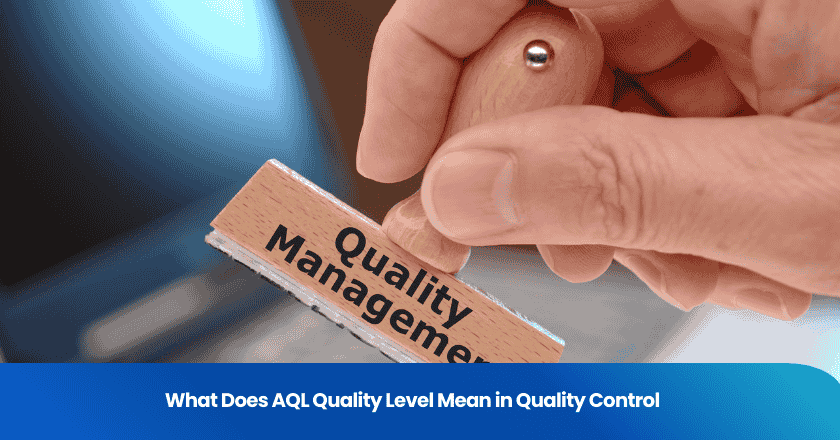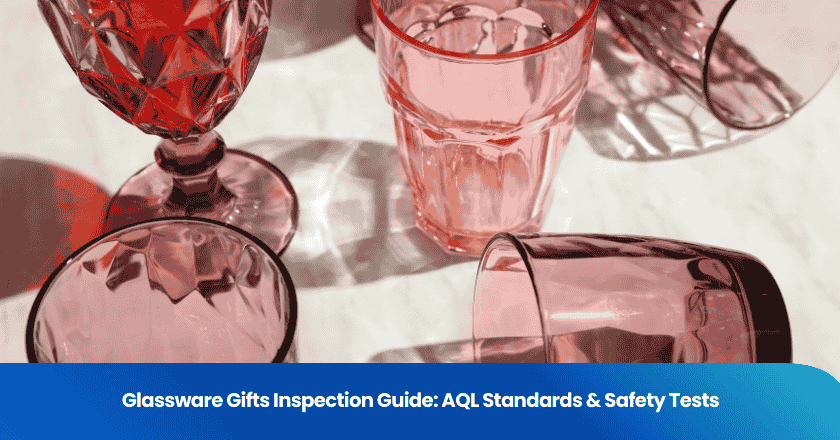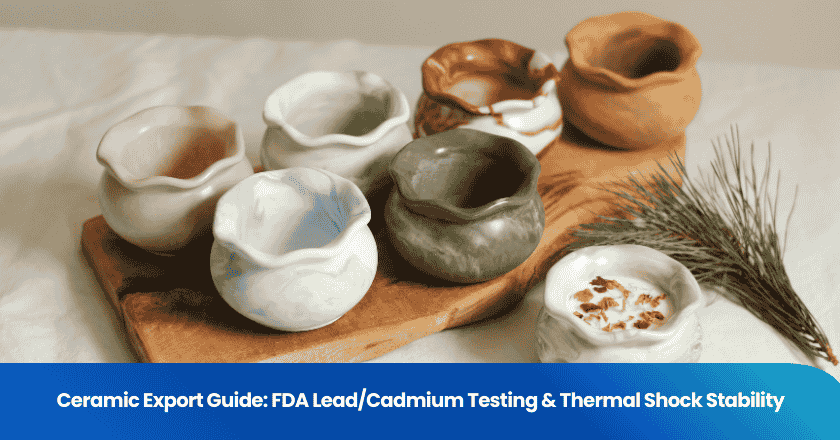
You encounter the term aql quality level often in quality control. AQL stands for "acceptable quality level." This standard sets the maximum allowable number of defects you can find in a sample before you reject a batch of product. You use aql quality level to protect your product standards and ensure only reliable goods reach your customers. The aql method gives you a clear benchmark for product inspection. It helps you decide if your product meets your required quality level and supports strong quality control practices.
Key Takeaways
- AQL means acceptable quality level and sets the maximum defects allowed in a sample before rejecting a batch.
- Using AQL helps balance product quality and inspection costs by focusing on representative samples.
- AQL sampling saves time and resources while ensuring products meet quality standards.
- Defects are classified as critical, major, or minor, and AQL levels vary to control each type effectively.
- AQL has limits and should be combined with other methods for products needing zero defects or high safety.
AQL Quality Level Basics
What Is AQL
You use AQL to set clear expectations for product quality during inspections. AQL stands for acceptable quality level. This term describes the maximum number of defects you allow in a sample before you reject the entire batch. When you apply AQL standards, you define how many defective products you can tolerate without compromising your quality goals.
AQL quality level acts as a benchmark. You select an AQL value, such as AQL 2.5, to match your product quality requirements. For example, if you choose AQL 2.5, you accept up to 2.5% defective items in your sample. You use this percentage to guide your inspection process and make decisions about accepting or rejecting products.
You rely on AQL tables to determine the sample size and the number of allowable defects. These tables help you apply the correct quality levels for different types of products. You can adjust the acceptable quality level based on the risk, value, and intended use of your products. AQL gives you a practical way to measure and control product quality.
Tip: You should always select an AQL quality level that matches your customer's expectations and your product's purpose.
Why AQL Matters
You need AQL to maintain consistent product quality and protect your reputation. When you use AQL quality level, you set clear standards for acceptable quality. This process helps you identify defects early and prevent poor-quality products from reaching your customers.
AQL supports your quality assurance strategy. You use it to balance inspection costs and product quality. By choosing the right acceptable quality level, you avoid over-inspecting and reduce unnecessary expenses. You also minimize the risk of shipping defective products.
AQL 2.5 is a common choice for many industries. You select this level when you want to allow a small number of defects but still ensure high product quality. You can adjust the AQL value for different products and quality levels. This flexibility lets you respond to changing market demands and customer requirements.
You benefit from AQL because it provides a standardized approach to quality control. You use AQL standards to communicate expectations with suppliers and inspectors. This clarity helps you achieve consistent results and maintain trust with your customers.
- You improve product quality by detecting defects before shipment.
- You reduce costs by focusing inspections on critical areas.
- You enhance customer satisfaction by delivering reliable products.
AQL quality level is essential for any business that values product quality and wants to build long-term success.
How AQL Works
Sampling Method
You use aql sampling to evaluate the quality of your products without inspecting every item. This statistical method helps you select a random sample from a batch. You determine the sample size based on the total quantity of products and the acceptable quality limit. The goal is to get a reliable snapshot of the batch's overall quality.
Aql sampling relies on probability. You choose a sample that represents the entire batch. If the sample meets your quality standards, you accept the batch. If the sample contains too many defects, you reject the batch. This approach saves time and resources while maintaining strict quality control.
Note: You should always follow the guidelines in the aql tables to select the correct sample size for your inspection processes.
You can see how aql sampling works in the table below:
| Batch Size | Sample Size | Acceptance Number | Rejection Number |
|---|---|---|---|
| 500 | 50 | 2 | 3 |
| 1,200 | 80 | 5 | 6 |
| 5,000 | 200 | 10 | 11 |
This table shows how you use aql sampling to decide how many products to inspect and how many defects you can allow.
Acceptance Quality Limit
You set the acceptance quality limit to define the maximum number of defects you will tolerate in your sample. This limit is critical in your inspection processes. The acceptance quality limit acts as a threshold. If the number of defective items in your sample stays below this limit, you accept the batch. If the number exceeds the limit, you reject the batch.
You often express the acceptance quality limit as a percentage of defective items. For example, you might set an acceptable quality limit of 2.5%. This means you allow up to 2.5% defective products in your sample. You use this percentage to guide your inspection and make decisions about batch acceptance.
Tip: You should adjust your acceptance quality limit based on the risk level and the importance of your products.
You use acceptable quality limit sampling to ensure your inspection processes are both efficient and effective. This method helps you balance quality assurance with operational costs.
Product Inspection Process
You follow a structured product inspection process to apply aql standards. First, you select a random sample using the aql tables. Next, you inspect each product in the sample for defects. You record the number of defective items and compare it to your acceptance quality limit.
You use the results of your inspection to decide whether to accept or reject the batch. If the number of defects is within the acceptable range, you approve the batch. If the defects exceed the limit, you reject the batch and may require corrective action.
You often perform a final random inspection before shipment. This step ensures that your products meet the required quality standards. You rely on aql to make objective decisions and maintain consistency in your inspection processes.
You protect your customers by preventing defective products from reaching them.
You improve your quality control by identifying issues early.
You optimize your inspection processes by focusing on critical areas.
Aql gives you a practical framework for managing product quality. You use it to set clear standards, streamline inspections, and ensure reliable products reach your customers.
Acceptable Quality Level & Defects
Defect Types
You need to understand the different types of defects before you set an acceptable quality level for your product. Defects fall into three main categories: critical, major, and minor. Each category affects product quality in a unique way.
- Critical defects: These defects make a product unsafe or unusable. You must not allow any critical defects in your products. Even one critical defect can lead to a product recall or safety issue.
- Major defects: These defects reduce the product quality or performance. Customers may return products with major defects. You should set a low acceptable quality level for major defects to protect your reputation.
- Minor defects: These defects do not affect the function or safety of the product. Customers may still accept products with minor defects, but you should keep them within acceptable limits.
You use these categories to decide the acceptable levels of defects for each inspection. By classifying defects, you can focus your quality control efforts on the most critical issues and improve overall product quality.
AQL Levels Explained
You select an acceptable quality level based on the type of product and the risk you are willing to take. The most common AQL levels are AQL 2.5, AQL 1.0, and AQL 4.0. Each level sets a different acceptable quality limit for defects in your sample.
| AQL Level | Defect Type | Acceptable Quality Limit (%) |
|---|---|---|
| 0.65 | Critical defects | 0 |
| 1.0 | Major defects | 1.0 |
| 2.5 | Major defects | 2.5 |
| 4.0 | Minor defects | 4.0 |
You often use AQL 2.5 for general consumer products. This means you accept up to 2.5% defective items in your sample. For critical defects, you set the acceptable quality limit at zero. You must reject any batch with even one critical defect. For minor defects, you can choose a higher acceptable quality level, such as AQL 4.0, to balance product quality and inspection costs.
Tip: Always match your acceptable quality level to your product quality goals and customer expectations.
By understanding AQL levels, you can set clear standards for product quality and ensure your products meet market requirements.
AQL Tables in Product Inspection
Using AQL Tables
You rely on AQL tables to guide your product inspection process. These tables help you decide how many units to inspect and how many defects you can accept before you reject a batch. You start by finding the lot size, which is the total number of products in your shipment. Next, you choose the inspection level. Most consumer products inspection uses General Inspection Level II, which balances cost and accuracy.
You then look up your lot size and inspection level in the AQL table. The table shows the sample size code letter. You use this code to find the exact number of units to inspect. The table also lists the acceptance and rejection numbers for each AQL level. For example, if your sample size is 80 and your AQL for major defects is 2.5, you might accept the batch if you find 5 or fewer defects, but you reject it if you find 6 or more.
Tip: Always use the correct AQL table for your industry and product type to ensure accurate quality inspections.
Determining Sample Size
You determine the sample size by matching your lot size and inspection level in the AQL chart. For example, if you have a batch of 1,200 units and select General Inspection Level II, the table may tell you to inspect 80 units. You then check the acceptance and rejection numbers for your chosen AQL.
Let’s look at a real scenario. You perform pre-shipment inspections on a batch of 1,200 products. The AQL table tells you to inspect 80 units. If you find 5 or fewer defects, you accept the batch. If you find 6 or more, you reject it. This method ensures your product inspections are both efficient and reliable.
You use AQL tables for many types of inspections, including pre-shipment inspections and quality inspections. This approach helps you maintain high standards and deliver safe, reliable products to your customers.
Benefits and Limits of AQL
Cost vs. Quality
You face a constant challenge in balancing cost and quality control. AQL helps you optimize your inspection process. You do not need to inspect every unit in a batch. Instead, you select a sample size that provides reliable results. This approach saves you time and resources. You reduce labor costs and minimize delays in production. You also maintain high standards for product quality.
- You lower inspection costs by focusing on representative samples.
- You improve efficiency in your quality control inspection process.
- You maintain consistent product quality without overspending.
Note: You should adjust your AQL level based on your product’s risk profile and customer expectations.
Common Misconceptions
You may encounter several misconceptions about AQL and quality control. Some believe AQL guarantees zero defects in every batch. In reality, AQL sets a limit for acceptable defects. You use AQL to manage risk, not eliminate it. Another misconception is that AQL applies the same way to all products. You must select different AQL levels for different product categories and defect types.
| Misconception | Reality |
|---|---|
| AQL means zero defects | AQL allows a limited number of defects |
| One AQL fits all products | You must tailor AQL to each product type |
| 100% inspection is required | Sampling provides reliable quality control |
Tip: You should educate your team about how AQL works to avoid misunderstandings in your quality control inspection process.
Limitations
You should recognize the limitations of AQL in quality control. AQL sampling does not guarantee that every defect will be detected. You may miss rare or hidden issues if they do not appear in your sample. You must rely on statistical probability, which means some risk remains. You cannot use AQL for products where safety is critical and zero defects are required. You should combine AQL with other quality control methods for best results.
- You may overlook defects outside the sample.
- You cannot use AQL for critical safety items.
- You should supplement AQL with additional inspection techniques.
Reminder: You should review your quality control strategy regularly to ensure it meets your business goals.
You gain a clear understanding of how AQL quality level shapes your approach to quality control. By applying AQL, you set measurable standards for every product and protect your reputation. You deliver consistent product quality and build trust with your customers.
- Use AQL to balance quality assurance and cost.
- Review your product requirements and select the right AQL level.
- Train your team to apply AQL in daily product inspections.
Start implementing AQL today to strengthen your product quality management.
FAQ
What does AQL stand for in quality control?
AQL means "acceptable quality level." You use it to set the maximum number of defects allowed in a sample before you reject a batch during inspection.
How do you choose the right AQL level?
You select the AQL level based on your product type, risk tolerance, and customer expectations. Lower AQL values mean stricter quality standards.
Can you use AQL for every product?
You should not use AQL for products where safety is critical and zero defects are required. AQL works best for general consumer goods and non-critical items.
What happens if your sample exceeds the AQL limit?
You must reject the batch if defects in your sample exceed the AQL limit. You may need to request corrective actions or additional inspections.
Why do you use sampling instead of inspecting every item?
Sampling saves you time and resources. You inspect a representative sample to assess overall quality, which helps you maintain efficiency and control costs.
Grow your business with TradeAider Service
Click the button below to directly enter the TradeAider Service System. The simple steps from booking and payment to receiving reports are easy to operate.



